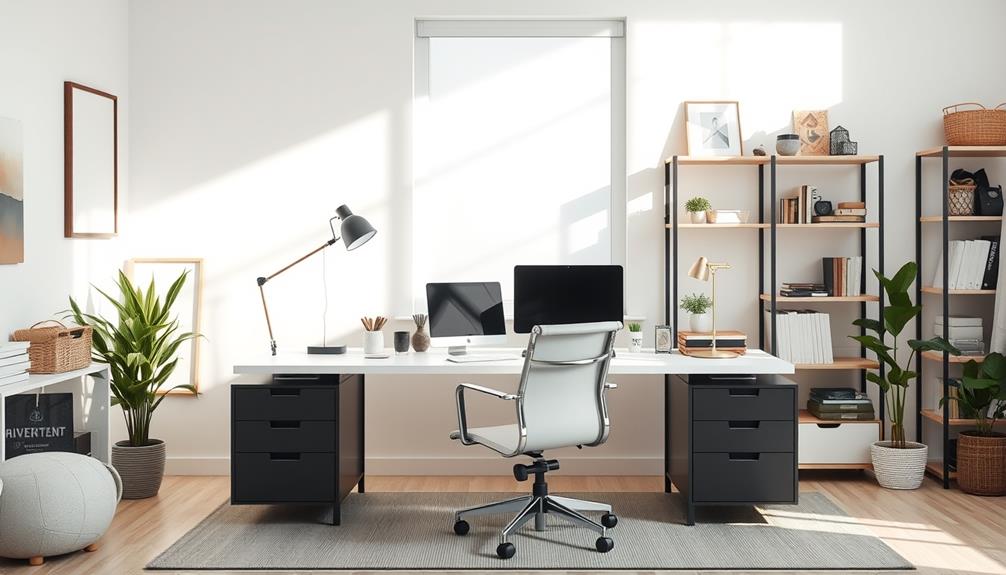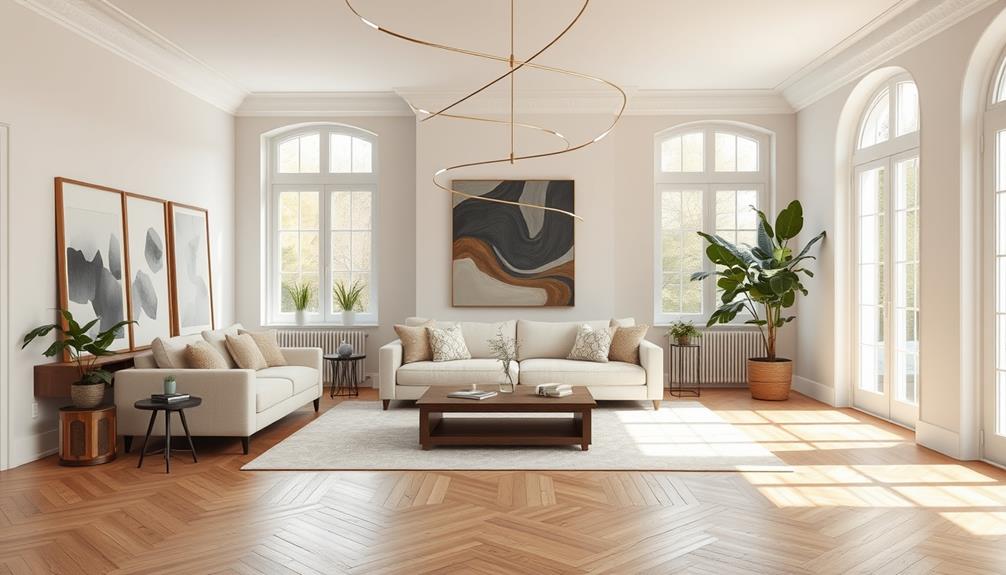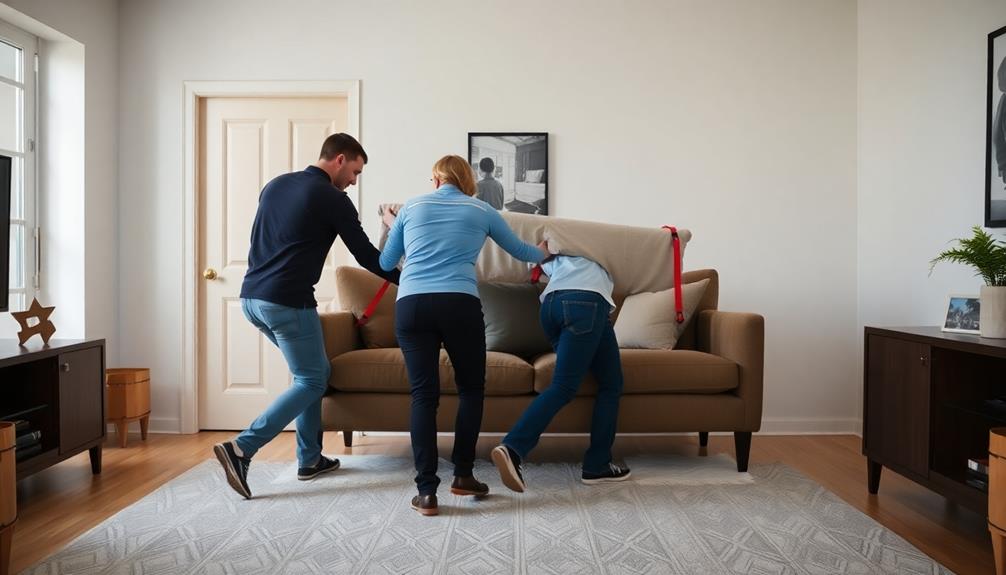To successfully sell furniture online, it is important to first clean and make any necessary minor repairs to increase its appeal. Utilize popular platforms such as Facebook Marketplace or specialized sites like Chairish to list your items. Pricing your furniture competitively, approximately 20% lower than the original cost, and being open to negotiation is key. Use social media to share high-quality photos of your furniture and create engaging posts. Building trust with potential buyers by maintaining clear communication is essential, and offering local pickup can help simplify logistical arrangements. Keeping up with current market trends can help attract more buyers effectively. Consider providing detailed descriptions for each piece of furniture to give potential buyers all the information they need. Highlight any unique features or selling points to generate interest. In addition, exploring options like contacting local furniture consignment shops or hosting a garage sale can offer alternative methods for selling your used furniture.
Key Takeaways
- Clean and repair furniture to enhance its appearance before listing it online.
- Take high-quality photographs in good lighting from multiple angles to showcase the item effectively.
- Choose the right selling platforms, considering both general marketplaces and niche options specific to furniture.
- Research and competitively price your items, being open to negotiations and adjusting prices if necessary.
- Utilize social media and local community engagement to increase visibility and attract potential buyers.
Preparing Your Furniture
When you're getting ready to sell your furniture, it's vital to make it as appealing as possible. Start by thoroughly cleaning your pieces. Vacuum, steam clean, and use non-bleach disinfectants to guarantee your furniture looks presentable and free of dirt and bacteria.
For a fresh finish, consider a homemade cleaning solution with vinegar and dish soap. Additionally, using essential oils like eucalyptus oil in your cleaning routine can help sanitize surfaces while adding a pleasant scent to your items.
Next, make minor repairs to enhance the visual appeal and value of your items. Patch scratches or fix tears, so potential buyers see the furniture at its best.
After you've cleaned and repaired, it's time to prepare for the photos. Capture high-quality photographs in well-lit settings from multiple angles. Showcasing the item's features and scale will attract buyers more effectively.
Choosing Selling Platforms

When you're ready to sell your furniture, choosing the right platform can make all the difference. Popular online marketplaces like Facebook Marketplace and Craigslist offer broad reach, while niche platforms like Chairish and 1stDibs cater to specific audiences.
Understanding your financial health can also guide your pricing strategy, ensuring you attract buyers while maximizing your returns. Consider your furniture type and target buyer to find the best fit for your sale.
Popular Online Marketplaces
Choosing the right online marketplace for selling furniture can make all the difference in your success. When you want to sell your furniture online, consider platforms that best suit your items and target audience.
For instance, if you're looking to connect with buyers who appreciate unique and handcrafted pieces, exploring hidden gems for camping can inspire creative descriptions that attract a niche audience. Facebook Marketplace is a popular choice for local sales, with no listing fees and a direct connection to potential buyers, allowing for quicker transactions.
If you have vintage or designer pieces, Chairish offers a curated marketplace and higher consignment payouts, making it an excellent option for furniture resale. On the other hand, Craigslist allows for free listings and has a broad reach, but be cautious about buyer transparency and safety.
For a mobile-friendly experience, OfferUp is great for local transactions, providing an easy interface for selling items while reaching a large audience.
Niche Selling Platforms
Niche selling platforms offer a targeted approach to selling furniture, connecting you with buyers who appreciate unique styles and high-quality pieces.
These platforms can help you maximize your profits, especially if you're dealing with vintage furniture or one-of-a-kind items. Here are some options to contemplate:
- Chairish and 1stDibs: Perfect for high-end and vintage furniture, often yielding higher resale values.
- Facebook Marketplace: Great for local sales with no listing fees, making it easy to sell quickly without worrying about shipping.
- OfferUp: Focused on mobile transactions, it enhances local selling with a user-friendly app for direct communication.
- Craigslist: Allows free listings and reaches a broad audience for local sales, although it may lack some buyer transparency.
Pricing Your Items

Setting the right price for your furniture is essential to attracting buyers and making a sale. Start by researching similar items on platforms like eBay, Craigslist, and Facebook Marketplace. This will help you establish a competitive price point based on your furniture's condition and market demand.
A good rule of thumb is to set your price around 20% lower than the original purchase price; this strategy can draw in potential buyers while still offering you a fair return.
Don't forget to utilize online furniture calculators to help assess your items' value. These calculators consider factors like condition, age, and current market trends, giving you a solid starting point.
Remember, many buyers expect to negotiate, so be prepared for some back-and-forth. It's wise to have a minimum acceptable price in mind to guide these discussions effectively.
If your item hasn't sold in a couple of weeks, consider adjusting the price to better reflect market demand. A slight price drop can encourage quicker sales and keep your listing relevant.
Pricing your items correctly is key to a successful sale!
Marketing Strategies

To successfully market your furniture online, you'll want to harness the power of social media.
Create eye-catching posts that highlight your pieces and engage with local communities to boost visibility.
Social Media Promotion
When it comes to selling furniture online, harnessing the power of social media can greatly boost your visibility and attract potential buyers. By utilizing platforms like Instagram and Pinterest, you can showcase high-quality images of your furniture items.
Remember, posts with great visuals receive 94% more views!
Here are some effective social media promotion strategies to contemplate:
- Engage with local community groups on Facebook to share your listings, increasing your reach within the neighborhood.
- Use targeted hashtags relevant to your furniture style and location—11 or more hashtags can enhance post engagement by up to 79%.
- Create promotional posts or stories that highlight discounts or special offers, as 60% of consumers are influenced by social media promotions.
- Encourage satisfied buyers to share their purchases on their own social media, leveraging word-of-mouth marketing to enhance your brand's reach.
Engaging Visual Content
Visual content plays a pivotal role in capturing the attention of potential buyers and making your furniture listings stand out. When selling online furniture, using high-quality images is essential. Capture your pieces in well-lit environments, showcasing multiple angles and intricate details. This enhances their appeal and attracts buyers.
Staging furniture in attractive settings is another effective strategy. By placing items in environments that reflect their intended use, you help buyers envision how they'll fit into their own homes. Engaging visuals, such as before-and-after comparisons or lifestyle images, can further highlight the furniture's features and potential transformations.
Don't forget to leverage social media platforms. Share visually appealing posts and listings, using relevant hashtags to reach a broader audience.
Creating videos or virtual tours of your furniture also provides an immersive experience, allowing potential buyers to assess the size and condition of the items more effectively.
Local Community Engagement
Local community engagement is key to successfully selling furniture online. By connecting with your local audience, you can build trust and visibility.
Start by leveraging platforms like Facebook and Nextdoor to engage with community groups. Here are some effective strategies to evaluate:
- Partner with local influencers or bloggers who specialize in home decor to reach a targeted audience.
- Attend or participate in local flea markets or garage sales, allowing potential buyers to see your furniture in person.
- Create visually appealing posts with high-quality images and engaging descriptions on local online forums to attract attention.
- Offer community-specific promotions or discounts to encourage quicker sales, making your listings more appealing.
Managing Customer Inquiries

To effectively manage customer inquiries, it's crucial to set clear expectations in your listings regarding response times. This approach helps filter serious buyers from casual browsers and reduces the volume of questions you receive. By specifying how quickly you'll respond, potential buyers know what to expect.
Using automated responses for common inquiries is another great strategy. Whether it's about item dimensions or availability, automating these replies saves you time and streamlines communication.
Additionally, consider creating a Frequently Asked Questions (FAQ) section in your listings to address typical buyer concerns about shipping, payment methods, and return policies.
Engage promptly with potential buyers to build trust; studies show that quick responses can greatly increase the likelihood of a sale.
When answering inquiries, be transparent and honest about any defects or wear on the furniture. This honesty not only manages buyer expectations but also prevents post-sale disputes.
Handling Shipping Logistics

Once you've managed customer inquiries effectively, it's time to tackle shipping logistics, which can be one of the most challenging aspects of selling furniture online.
To sell your used furniture successfully, you'll need to plan for shipping to meet customer expectations while keeping costs reasonable.
Here are some key points to contemplate:
- Local Pickup Options: Offer local pickup to simplify logistics and save on shipping costs.
- Research Shipping Services: Compare services like UPS Freight or FedEx, which specialize in handling large furniture items.
- Properly Measure and Package: Confirm you properly measure your furniture and package it using moving blankets and sturdy boxes to prevent damage during transit.
- Transparency in Listings: Be clear about shipping costs and delivery timelines; unexpected fees can deter buyers.
Using freight shipping calculators can help you get accurate shipping estimates based on size, weight, and destination.
Dealing With Unsold Items

Dealing with unsold items can be frustrating, but there are effective strategies to move your furniture quickly. If your items remain unsold after a few weeks, consider lowering the price or offering discounts to attract buyers. You can list unsold items on platforms like Craigslist and NextDoor for free, helping you find local takers fast.
| Strategy | Description | Benefits |
|---|---|---|
| Price Reduction | Lower prices or offer discounts on unsold items | Attracts more potential buyers |
| Free Local Listings | Use Craigslist and NextDoor to list items | No seller fees, quick visibility |
| Charitable Donations | Donate to organizations like Habitat for Humanity | Tax deductions and goodwill |
| Garage Sales/Flea Markets | Host a sale or join community events | Engage directly with buyers |
Reassess the condition and appeal of your unsold items. Verify you have accurate descriptions and quality images for future listings. If selling isn't working, charitable organizations can be a great option. Not only do you help others, but you can also clear out space and potentially benefit from tax deductions.
Understanding Market Trends

Understanding market trends is vital for successfully selling furniture online. By staying informed about current consumer preferences, you can strategically position your products to meet demand.
The global furniture market is thriving, with a valuation of approximately $252.7 billion in 2023. Here are some key trends to take into account:
- Mid-century modern and minimalist designs are gaining popularity, appealing to buyers who value simplicity and functionality.
- Eco-friendly furniture is increasingly favored as consumers prioritize sustainable and responsible practices in their purchases.
- The demand for unique furniture pieces is on the rise, as shoppers seek vintage items that add character and history to their homes.
- Social media platforms like Instagram and Pinterest greatly influence buying decisions, making visually appealing posts essential for engagement.
Exploring Business Models

With a solid grasp of market trends, you can now explore various business models that suit your strengths and goals in the online furniture market. Each model has its own unique appeal and challenges, so consider what aligns best with your skills and resources.
| Business Model | Description | Pros |
|---|---|---|
| Furniture Maker | Design and build custom pieces | High profit margins, creative control |
| Furniture Designer | Collaborate with manufacturers for unique designs | Focus on aesthetics, less hands-on work |
| Curator and Reseller | Source and sell curated furniture items | Creativity in selection, target demographics |
| Dropshipper | Partner with brands for direct shipping | Low startup costs, no inventory management |
| Vintage Reseller | Sell unique vintage pieces, often restored | Niche market appeal, potential for high value |
Frequently Asked Questions
What Is the Best Place to Sell Furniture Online?
When you're considering the best place to sell furniture online, think about your target audience. Platforms like Facebook Marketplace offer local connections, while Chairish is perfect for vintage items. Evaluate your needs to choose wisely.
How to Be Safe When Selling Furniture Online?
You're meeting a stranger—your heart races. To stay safe, always choose public spots, bring a friend, and trust your instincts. Protect personal info and use secure payment methods to avoid scams. Stay vigilant!
How to Sell Furniture Online Without Getting Scammed?
To avoid scams, use secure payment methods and verify buyer profiles. Meet in public places, don't share personal info too soon, and be wary of deals that seem too good to be true. Stay safe!
What Is the Best App to Sell My Furniture?
To sell your furniture, consider using apps like Facebook Marketplace for local reach and no fees, OfferUp for ease of use, or Chairish for vintage items. Each platform has unique advantages tailored to your needs.
Conclusion
So, you've conquered the art of selling furniture online, huh? Who knew you'd find joy in haggling with strangers over a slightly scratched coffee table? Embrace the chaos of shipping logistics and the thrill of unanswered customer inquiries—it's like a modern treasure hunt, only there's no treasure. But hey, at least you're clearing out your living room, right? Just remember, if it doesn't sell, it's not junk; it's "vintage" now. Happy selling!









